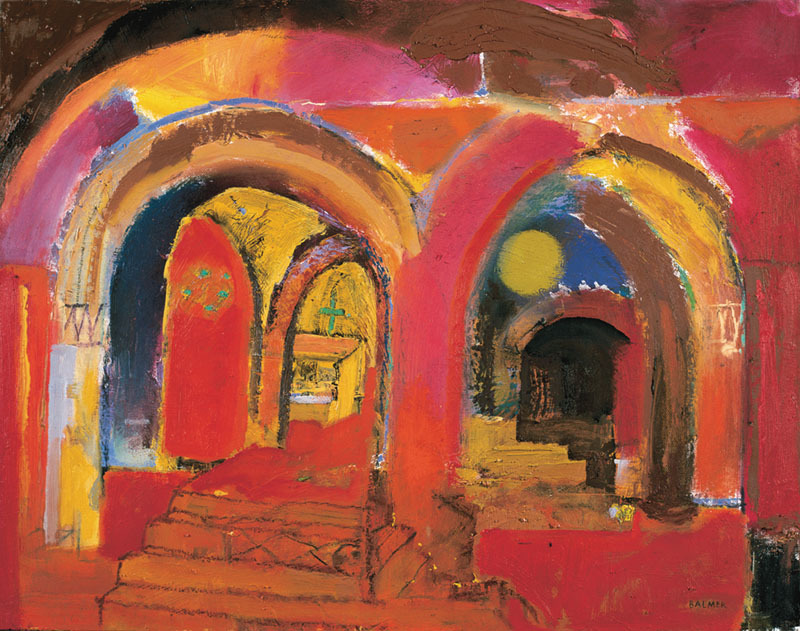Taking the train from Paddington to Bristol can be hazardous if you coincide with an exodus of holidaymakers on summer excursions. I travelled down on a Thursday morning and the Paignton express was not only packed to the gunnels (if trains can rightly be said to have gunnels), but even picked up more passengers en route. But the effort was very definitely worthwhile: in the superb top-lit galleries of the Royal West of England Academy is a glorious show of paintings by the RWA’s president, Derek Balmer (born 1934). Here are paintings of place coursing with rich colour, evocations of foreign travel and the landscapes of home, cities and fields endorsed with the traces of man — a history of civilisation in the making.
Balmer’s retrospective starts in 1950, when he began to attend the West of England College of Art, and, as he says, ‘came home’ after a rather disjointed childhood. From that year is a tawny-green rustic scene, its sweet romanticism somewhat tempered by impasto. Within three years his subject matter had got grittier, and he was painting a bus shelter in various greys. Interesting to note here the first appearance of a grid layout to his composition, which becomes something of a leitmotif. Passing through an almost obligatory Sickert-inspired period, Balmer responded to the more contemporary influences of Kitchen Sink and the teazles of Alan Reynolds with a large painting of cow parsley from 1959. With the 1960s the work loosens up. ‘Seeds Dispersing’ of 1962 is an effective, rhythmically-driven composition of small explosions against white. Colour now comes to the fore, particularly reds and bright autumnal hues. Jump to the weird poetry of ‘Landscape with UFOs’ of 1976 and the echoes of Graham Sutherland in ‘Secret Garden’ of 1975. ‘Wild Flowers’ of 1979, alive with pale blue, relates directly back to ‘Seeds Dispersing’ but is handled with rather more assurance.
Why is Balmer not better known? In part because he forsook a potentially glittering career when it was offered to him too early by the Leicester Galleries, in the 1960s.








Comments
Join the debate for just £1 a month
Be part of the conversation with other Spectator readers by getting your first three months for £3.
UNLOCK ACCESS Just £1 a monthAlready a subscriber? Log in